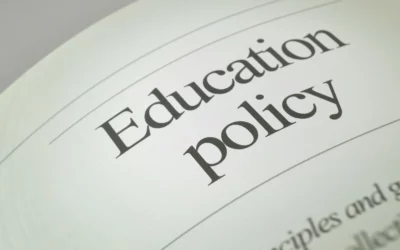
Written by The Likely Voter
October 26, 2023
![]()
Following the American Revolution and the aspiration for a republican form of government rather than a monarchy, the framers wrote the U.S. Constitution with the intention of keeping absolute power out of the hands of any one person or small group of people. This led to the three distinct branches of government: executive, legislative and judicial.
John Adams famously wrote that the separation of powers establishes a “government of laws, and not of men.”
The separation of powers, according to Bill Duncan, Sutherland Institute’s constitutional law and religious freedom policy fellow, “is the reason we care about what the president does on a daily basis.”
Throughout America’s history, there have been landmark moments that have clearly defined each branch’s authority and how it checks and balances the authority of the other branches. Three instances arguably stand out above the rest.
Marbury v. Madison (1803)
One of the nation’s best-known cases, Marbury v. Madison established the Supreme Court’s role in determining the constitutionality of laws, otherwise known as judicial review.
This became the foundation of the judicial branch’s ability to check the legislative power of Congress.
Clinton v. New York (1998)
Clinton v. New York is one of many instances in which the executive branch has been reined in by the judicial branch. The ruling halted the executive’s attempt to alter a law using a line-item veto, which would have allowed for executive branch cherry-picking of legislative powers.
The case was relatively ideologically neutral, as justices Ruth Bader Ginsburg and Clarence Thomas both decided in the majority.
Dred Scott v. Sandford (1857) and the 14th Amendment
Considered by many to be the most regrettable court decision in American history, Dred Scott v. Sandford ruled that black Americans were not citizens under the Constitution.
During the Civil War era, the legislative branch and the American people overturned this Supreme Court ruling with the passage of the 14th Amendment – putting a much-needed check on the judicial branch.
As Supreme Court justices, presidents and legislators come and go, the Founders’ efforts to provide staunch checks and balances have enabled the protection of the American republic.
“The separation of powers,” Duncan said, “has staved off dangerous attempts to overstep authority by bad actors.”
By defending this crucial piece of the system, Americans are defending the foundations of our republic.

For a more in-depth perspective on this article, read our Insights piece here.
Takeaways: the most important things voters need to know. For civically engaged citizens.

- The Founding Fathers intentionally split the government into three distinct branches to prevent one individual or a small group of people from concentrating legislative, executive and judicial power.
- Three moments in American history have arguably defined the separation of powers.
- The separation of powers is a unique constitutional principle that protects the very fiber of the American system.
More Insights
Read More
What’s happening with education choice policy?
There’s movement on a federal scholarship tax credit while more states adopt private school choice policies.
Trump’s tariffs: path to working-class prosperity, or protectionist misstep?
Defenders argue tariffs will restore manufacturing jobs, while critics say they amount to a tax on Americans with little real benefit. Experts from both sides weigh in.
Congress should follow Utah’s lead on protecting kids online with app store law
A new bill to regulate app stores has been introduced in Congress.



